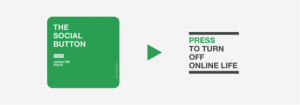The final sprint!
Hello dear readers!
Insights co-creation sessions
We have finished our last co-creation sessions, and the results have had a massive impact on our progress. As discussed briefly in our last blog, we decided not to go with the breathing mechanism. The main reason for this is that, according to the insights we have derived from our sessions, using the mechanism in public would be too intrusive for the user, even if the mechanism could be used discretely.
New approach: inspirations of CBT
Instead, our user group proposed to focus on a fully smartphone based solution, that we already mentioned in our last blog as well. The application that we are developing is inspired by a technique that is used by therapists while treating (post-)psychotics. Cognitive behavioral therapy (CBT), as the technique is called, is a form of therapy in which the therapists tries to re-orientate the client on his thoughts. Delusions or negative thought patterns of the client may lead to unwanted behavior, and by asking direct questions to the client, the therapist can revert thought patterns of the client to more positive ones. This does not happen by saying that what the client is experiencing is not true by definition, but more by making him realize that what he is experiencing could be a thought pattern that is constructed inside his own mind, and that does not have to be connected to reality outside.
Our application is inspired by this technique in the way that it asks questions to the user, to make him conscious of the thought patterns that might be constructed in his head, and of their intensity and credibility. The answers to the questions (that can be answered in multiple choice form, or in percentages, and lead to various new questions) construct a mindmap structure, which the user can review and show to his therapist in the actual therapy. This last comment brings us to an important note: the application we are building is not a replacement of professional psychological therapy, but an addition to what is already there. It is a way to directly re-orientate a single thought pattern while experiencing it, instead of making a recap of the situations that have occurred earlier, while being in a professional therapy session.
The interface of the application will look like this: in the center, the questions are presented, which the user can answer. Filling (a part of) the screen, there is a status bar that shows the intensity and mood of the thought the user is experiencing, visualized in respectively size and colour. Basically, the bar serves as a motivator for the user to reach more positive/truthful thoughts. The user can add notes to answers, to make the answers more personal and extended, so that they can be better understood later. He is able to review the whole mindmap afterwards, alone or with a therapist.
Future plans
Currently, we are working a few things. We are taking care of the core programming, and meanwhile the last designs, structures and alternative messages are being finished and are being suited to implement them. We are also finishing the research paper that will accompany the prototype when it will be delivered.
We will keep you posted about our progress!
A last message: on June 25, we will do our FINAL PRESENTATION, in which we will present the prototype to the public. The other three MediaLAB groups will do the same, so it will be an interesting evening! The event will take place here at the MediaLAB studio, and you are welcome to come! If you are coming, please RSVP to this Facebook event.








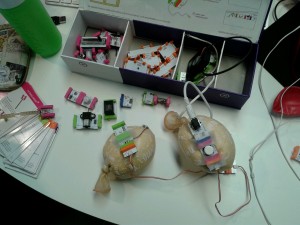
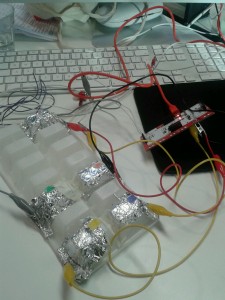
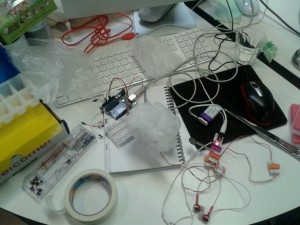
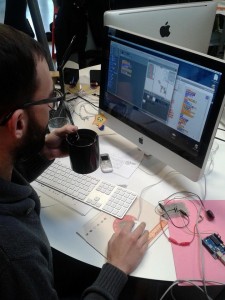
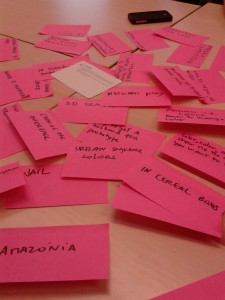
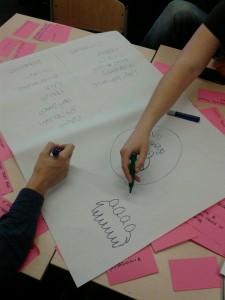
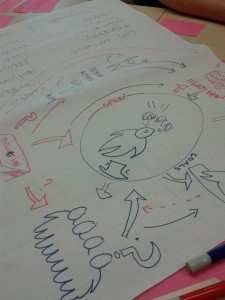
![2014-02-06 20.38.20[1] copy](https://medialabamsterdam.com/games4therapy/files/2014/02/2014-02-06-20.38.201-copy-225x300.jpg)

